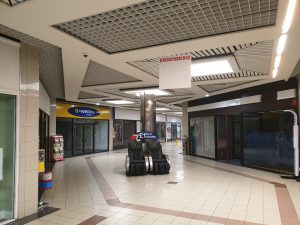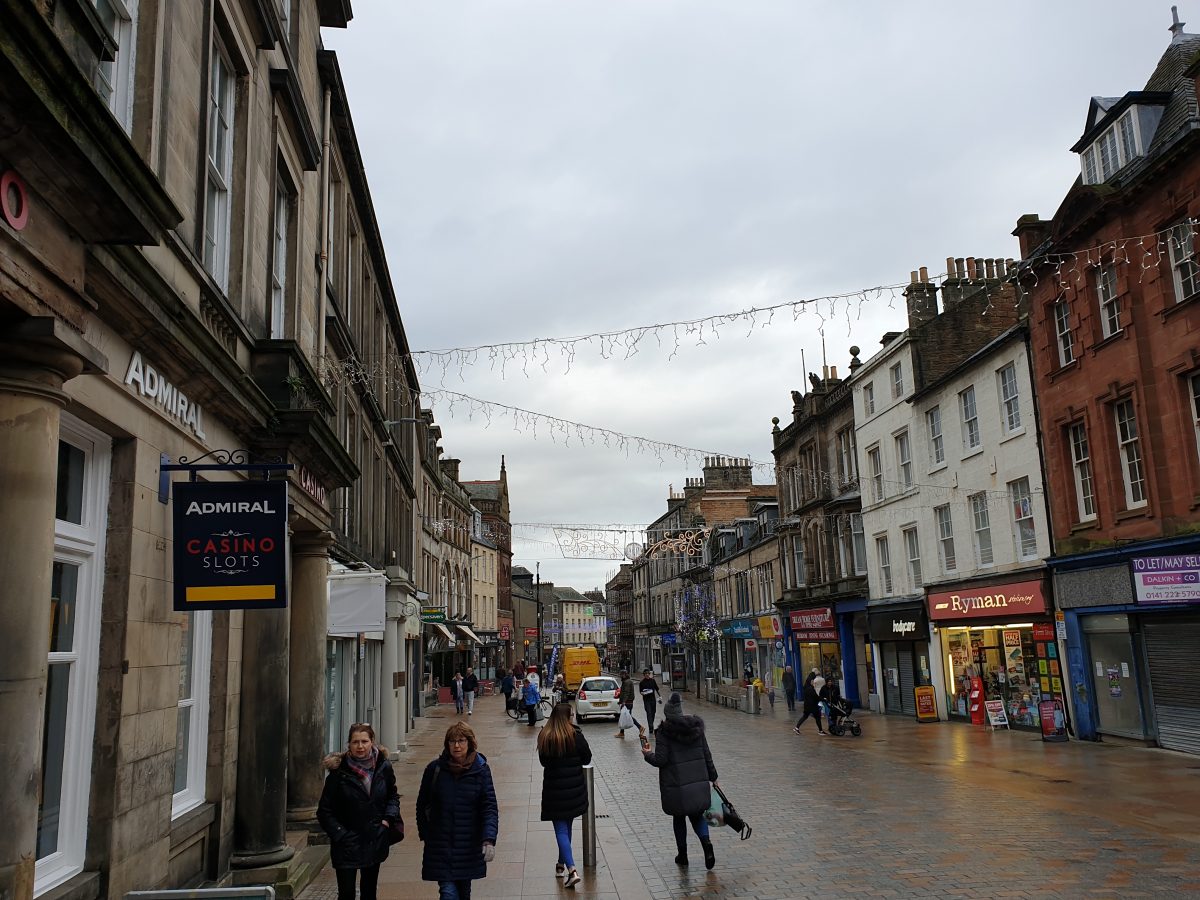When I grew up in Fife in the 70s and 80s, Kirkcaldy was top dog amongst the local towns. Even then, it was not quite what it had once been as the coal and linoleum industries had faded. Nonetheless, with its distinctive, imposing Victorian stone buildings and sense of dour permanence it was a place we visited regularly, in a time when no-one in Kirkcaldy would have given a second thought to visiting the upstart new town where I lived.
We went for occasions. The cinema, the annual Fair, pantomime at the Adam Smith theatre.
And yes, some of those occasions were shopping related. It was in Kirkcaldy that I stood, bored witless in BHS whilst my mum shopped.
Kirkcaldy was where you would go to visit an actual book shop. For a while, a musical instrument shop in one of the back streets was mecca for any of us with rock guitar fantasies, although it was frustratingly full of people who could really play.
These days, it is fair to say that Kirkcaldy’s grandeur is faded. The M&S has gone. The Debenhams closes any day now. The High Street wears its vacancies like gaps in a row of teeth, and the smaller units are more and more a cavalcade of charity shops and outreach centres.
In this, the town shares the same fate as many up and down the country. The story is familiar. Economic hardships, low hours contracts and the death of old industries mean there is less money and less confidence about. High rents and rates and the constrictor-squeeze of the internet giants mean retailers slip away. Kirkcaldy became a poster child for this decline when an entire shopping centre just yards from the High Street went up for sale last year with a £1 reserve price.
I made a passing reference to the town in a piece a month or so ago, pointing out that if you only do store visits in London, a trip to Kirkcaldy was likely to be a shock to the system. As I wrote it, though, I realised that it was a few years since I’d walked that street myself, and so just before Christmas I went back.
I found plenty that I expected. Signs of poverty abound. That shopping centre (which sold in the end for £310k) remains in a near-death state with only 2 or 3 units occupied. There is something genuinely eerie about walking through a largely unoccupied centre, more zombie apocalypse than retail apocalypse.

But I also found something I really didn’t expect. Because throughout the town there are signs of hope, and evidence of the local community fighting hard to retain the intangible importance of a strong town centre.
There are popups and independent stores galore including a farm shop and even a couple of coffee shops cocking a snook at the Costa opposite.
There is a covered market, of a sort, and market stalls popping up outside (and sometimes inside) the empty stores. Check the press coverage and it is clear the town authorities are trying their best to encourage new retail business, taking sensible looking action on parking charges and investing in infrastructure.
So is all going to be well for the community in Kirkcaldy? Not necessarily.
There is plenty that still needs to go right. The High Street still needs those big anchor brands. Not only has it lost M&S and Debenhams, but the venerable department store along the street looks vulnerable too.
There is also more that could be done in partnership between the council, landlords and tenants. The market could be made into something much more enticing; pop-up stores could fill gaps and, in an ideal world, gradually the mix of charity stores would be reduced a little.
There might be no helping the £1 shopping centre now, but repurposing it into flats and offices could indirectly support the reinvention of the High Street itself by boosting the local economy.
Talk to anyone expert in this kind of reinvention and they will tell you that it is very hard indeed. Bringing all the interested parties together is like herding cats at the best of times, and planning laws and council powers are rarely enough to allow the positive intervention a dying high street needs. It is here that government can help – towns like Kirkcaldy don’t need token central government investment, they need laws and processes changed so that obvious, sensible active management of the high street can happen more quickly.
That’s easier said than done. Give local authorities much greater planning powers to determine the type of shops, rents and lease terms that their High Street needs and you risk killing off the commercial property market altogether. Balance, and careful thought will be needed to get the formula right.
But talk to determined local retailers like the frustrated, passionate and business-savvy employees of Debenhams, angry at the avoidable end of a great brand and you sense the energy that could be put to work rebuilding.
We are a stubborn lot, us Fifers. Kirkcaldy is not done yet.

